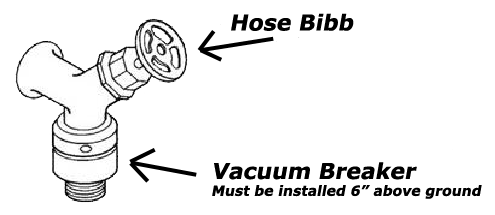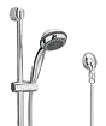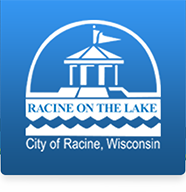-
City of Racine Water Utility

Mike Gitter
Water Utility Director

Joel Brunner
Plant Superintendent101 Barker Street
Racine, WI 53402Phone: 262-636-9181
Fax: 262-636-3933Water Main Breaks
24 hour emergency number
Phone: 262-636-9185
Cross Connection Control
-
Cross Connection Control Information
The City of Racine Water Utility staff is committed to providing quality, cost-efficient service in the production, treatment, testing and delivery of safe drinking water to all residential and commercial users.
Safe and reliable drinking water is a carefully manufactured product. In order to help ensure safe drinking water the City of Racine Water Utility has adopted a Cross Connection Control Program. This Program is a part of our effort to ensure safe and reliable drinking water and is required under Wisconsin Administrative Code NR 810.15 and State Plumbing Code (SPS) 382.41.
What is a Cross Connection?
A cross-connection is a direct or potential connection between any part of the public water supply system and a source of contamination or pollution. The most common form of cross-connection is a garden hose, which is easily connected to the public water supply system and can be used to apply a variety of potentially dangerous substances, including chemicals and fertilizer. Other common cross-connections include dishwashers, toilets, pressure washers, boilers, pools, and lawn sprinkler systems
Residential Cross Connection
The Racine Water Utility is required to change your residential water meter every 20 years. Meter replacement usually takes about 15 minutes and requires that we have access to the existing meter setting for the property. Please check the current meter location to make sure it is easily accessible for meter replacement.
Coordinated with water meter replacement, the Water Utility performs its residential cross- connection control (CCC) as required by state code. The purpose of the residential CCC program is to take additional steps to ensure the safety and quality of the water we consume in the City of Racine and surrounding villages. A CCC program for non-residential properties was implemented over five years ago.
The basics of a residential program will include:
- Providing educational materials related to potential cross-connections.
- Inspections of potable water outlets at residential properties to identify potential cross-connection issues. Common problems found at residential properties requiring corrective action include:
- Hose connections – These require installation of an approved vacuum breaker.
- Water softener recharge lines – These require a one-inch air break above the discharge point.
- Lawn irrigation systems.
- Boiler heating systems (does not include domestic hot water heaters).
The Water Utility will provide approved vacuum breakers for up to two existing hose connections per property. Property owners are responsible to take care of any other corrective measures.
Non-Residential Cross-Connection and Backflow Prevention Program
Cross-Connection Control Program Overview
The Racine Water Utility system delivers safe, high-quality drinking water every day. To continue to protect the public health and keep the water system safe from contaminants and pollutants we are required by the Wisconsin Department of Natural Resources, Wisconsin Department of Safety and Professional Services, and the Racine Municipal Code to maintain a cross-connection control program.
The Racine Water Utility has contracted with HydroCorp Inc., of New Berlin, Wisconsin to manage our program. HDI is an environmental services firm that specializes in backflow prevention and cross-connection control. They currently manage program services for over 80 municipalities and water utilities in Michigan and Wisconsin.
Over the next few years representatives from HydroCorp Inc. will perform the initial inspections of all commercial, industrial, and public authority buildings served by Racine’s retail water system to detect actual & potential cross connections and make recommendations for the installation of backflow prevention devices or assemblies where necessary. This will help ensure that contaminated or polluted water cannot backflow into clean drinking water.
What Is a Cross-Connection Control Program?
This is a combined cooperative effort between plumbing and health officials, municipalities, water utilities, and property owners to establish and administer guidelines for controlling cross-connections and ensuring enforcement so that the public drinking water supply is protected both in the city water distribution system and within buildings to the point of use.
Our program consists of the following components:
- Public Education Program
We will inform our water customers with brochures and other public awareness methods - Cross-Connection Survey
All industrial, commercial, and public authority facilities’ plumbing systems will be inspected to determine if cross-connections exist and appropriate corrective actions will be outlined if applicable. - Installation of Protective Devices
Where known unprotected cross-connections are identified, property owners will be required to install backflow prevention devices or assemblies. - Annual Testing
All backflow prevention assemblies must be tested once a year by certified testers, at property owner’s expense.
What is a Cross-Connection Survey?
The cross-connection survey is the first step in our program. Wisconsin Department of Natural Resources Regulations (NR 811.09) recommends that all industrial, commercial, and public authority facilities be surveyed for cross-connections regularly (every two to six years depending on the degree of hazard within the facility).
A survey is a walk-through of the water-system piping in a building or property, starting at the water meter and ending at the last free-flowing tap. Survey time varies depending upon the facility being surveyed. Large, complex facilities will be required to show that they have an internal program to protect the potable water system. At the end of the survey, HydroCorp Inc., will produce a report describing any violations or discrepancies found, as well as a time frame for compliance.
Surveys of existing facilities will be scheduled based on the degree of hazard that they present to the water system. The first round of surveys will include city-owned buildings, public school facilities, hospitals/medical facilities, car washes, industrial/manufacturing facilities, and mortuaries. Inspection notices will be mailed to water customers approximately two weeks before the scheduled inspection date. A building representative should be available during the inspection to answer questions and provide access to areas within the facility.
Questions?
Cross-connection control program questions can be directed to:
- Mike Wurster, Racine Water Utility
(262) 636-9186 - HydroCorp Inc.
(800) 315-4305
How Does Contamination Occur
Water normally flows in one direction, from the public water system through the customer’s cold or hot water plumbing to a sink connection or other plumbing fixture. The plumbing fixture is the end of the potable water system and the start of the waste disposal system.
Under certain conditions water can flow in the reverse direction. This is known as backflow. Backflow occurs when a backsiphonage or backpressure condition is created in a water line.
Backsiphonage may occur due to a loss of pressure in the water distribution system during a high withdrawal of water for fire protection, a water main or plumbing system break, or a shutdown of water main or plumbing system for repair. A reduction of pressure below atmospheric pressure creates a vacuum in the piping. If a hose bibb was open and the hose was submerged in a wading pool during these conditions, the non-potable water in the pool would be siphoned into the house’s plumbing and back into the potable water supply.
Backpressure may be created when a source of pressure, such as a pump, creates a pressure greater than that supplied form the distribution system. If a pump supplied from a non-potable source, such as a landscape pond, were accidentally connected to the plumbing system, the non-potable water could be pumped into the potable water supply.

Diagram of toilet tank with properly functioning air break
How to Prevent Contamination of Your Drinking Water
Protect your drinking water by taking the following precautions.
DO NOT:
- Submerge hoses in buckets, pools, tubs, sinks, or ponds.
- Use spray attachments without a backflow prevention device.
- Connect waste pipes from water softeners or other treatment systems to the sewer or submerged drain pipe.
- Use a hose to unplug blocked toilets or sewers.
DO:
- Keep the ends of hoses clear of all possible contaminants.
- If not already equipped with an integral (built-in) vacuum breaker, buy and install hose bibb type vacuum breakers on all threaded faucets around your home.
- Install an approved backflow prevention assembly on all underground lawn irrigation systems. Remember, a plumbing permit is required for the connection of an underground lawn irrigation system to your plumbing system.
Protection of the Public Water Supply System
In general, the installation of plumbing in compliance with the plumbing code will provide adequate protection for your plumbing system. Also, washing machines and refrigerator ice makers already incorporate backflow prevention.
The Water Utility will inspect each property to ensure there is adequate protection for the public water system.
Backflow Prevention Devices

Hose bibb with Backflow Prevention Device #ASSE 1011
Hose Connection Vacuum Breaker
Hose connection vacuum breakers are specifically made for portable hoses attached to hose thread faucets. Their purpose is to prevent the flow of contaminated water back into the drinking water. These devices screw directly to the faucet outlet. They can be used on a wide variety of installations, such as service sinks, hose faucets near a wading pool, laundry tub faucets, etc.
Some units are designed for manual draining for freezing conditions. Some are furnished with breakaway set screws as a tamper proof feature. All hand-held shower heads shall be hung up properly to prevent possible cross connection. These devices are not intended for operation under continuous pressure.

Hose bibb with recommended self draining vacuum breaker (Device #ASSE 1011)

Hand-held shower head requires the proper installation of a visible standard hose connection (Backflow Preventer Device #ASSE 1014)



